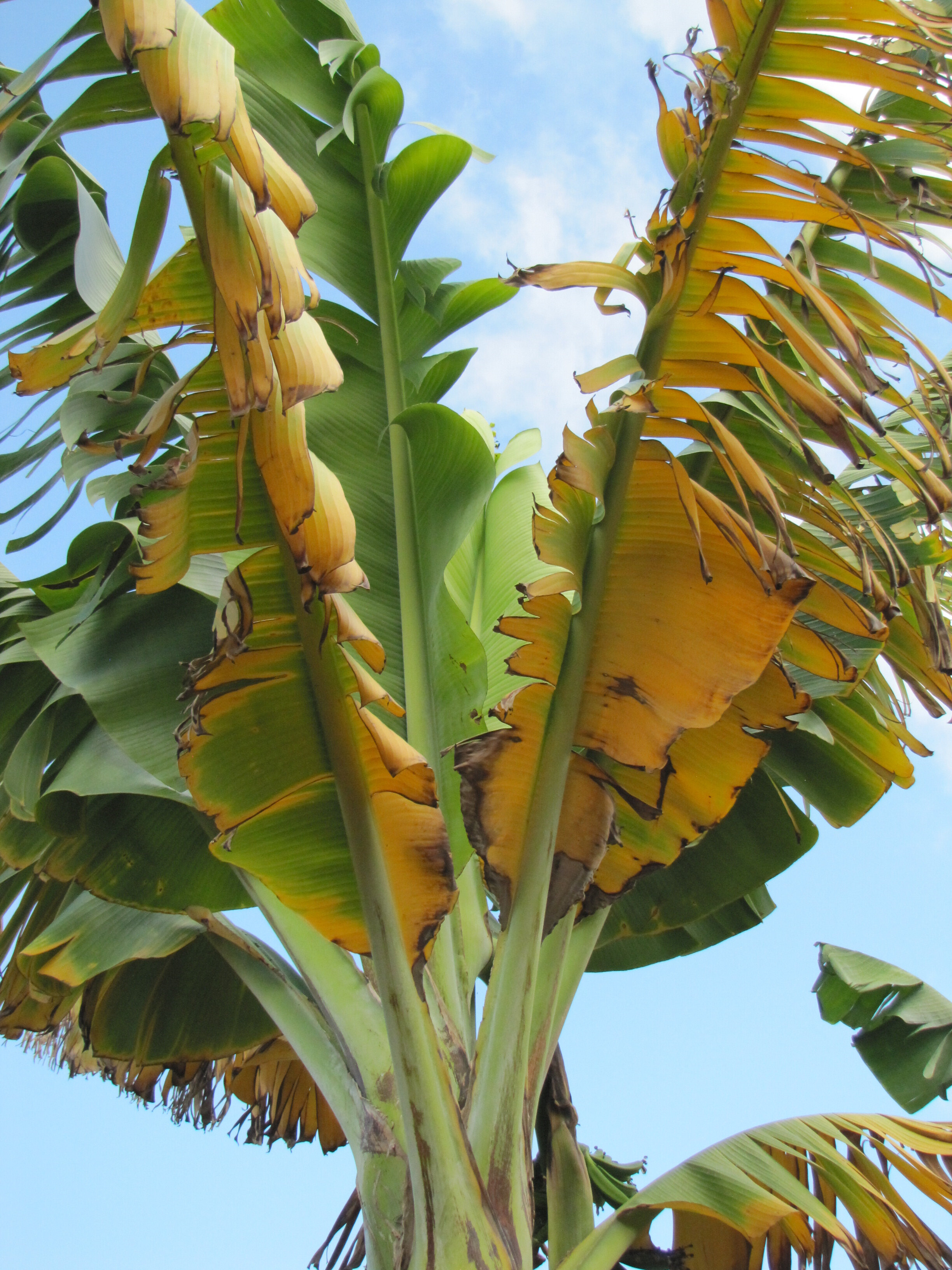
Banana Fusarium wilt is currently decimating the Cavendish banana – the world’s most popular commercially available banana. Once the fungus is present in a banana field, it cannot be eradicated, making future production of Cavendish bananas almost impossible. Photo credit: A. Viljoen
The bananas in your supermarket and those you eat for breakfast are facing functional extinction due to banana fusarium wilt (FWB). This disease is caused by a fungal pathogen called Fusarium oxysporum f.sp. cubense (Foc) Tropical Race 4 (TR4).
However, thanks to recent research by an international team of researchers led by the University of Massachusetts Amherst, we know that Foc TR4 did not originate from the strain that wiped out commercial banana cultivation in the 1950s, and that the virulence of this new strain appears to be due to some accessory genes related to nitric oxide production.
The study was published in Natural Microbiologyopens the door to treatments and strategies that can slow – if not control – the previously uncontrolled spread of Foc TR4.
“The variety of banana we eat today is not the same as the one your grandparents ate. These old varieties, the Gros Michel bananas, are functionally extinct, falling victim to the first Fusarium outbreak in the 1950s,” says Li-Jun Ma, professor of biochemistry and molecular biology at UMass Amherst and senior author of the study.
Today, the most popular commercially available banana variety is the Cavendish variety, which was bred as a disease-resistant response to the extinction of the Gros Michel banana. For about 40 years, the Cavendish banana thrived worldwide in vast monoculture plantations that provide the majority of the world’s commercial banana crop.
But in the 1990s, the good times for the Cavendish banana were coming to an end. “There was another outbreak of banana wilt,” says lead author Yong Zhang, who earned his doctorate under Ma’s supervision in the Organismic and Evolutionary Biology program at the University of Massachusetts Amherst. “It spread like wildfire from Southeast Asia to Africa and Central America.”
“We have spent the last decade studying this new outbreak of banana wilt,” says Ma, who is an expert on Fusarium oxysporum, which is not a single species but a “species complex” with hundreds of different varieties specialized to attack different host plants. These varieties are determined by the acquisition of strain-specific accessory genes in addition to a common core genome.
“We now know that the pathogen TR4 that is destroying the Cavendish banana did not evolve from the species that decimated the Gros-Michel bananas. The genome of TR4 contains some accessory genes related to the production of nitric oxide, which appears to be the key factor in TR4’s virulence.”

Fusarium wilt of banana (FWB) caused by Fusarium oxysporum f. sp. cubense (Foc) tropical race 4 (TR4) with external symptoms of FWB on Cavendish bananas. Photo credit: Zhang et al.
To reach this conclusion, Yong, Ma and their co-authors from China and South Africa, as well as universities in the United States, sequenced and compared 36 different Foc strains from around the world, including those that infect Gros Michel bananas. Then, with help from the Institute for Applied Life Sciences at the University of Massachusetts Amherst, the team discovered that Foc TR4, which is responsible for the current banana wilt outbreak, uses some additional genes for both the production and detoxification of the fungus’ nitric oxide to enter the host.
Although the team does not yet know exactly how these activities contribute to disease in the Cavendish banana, they found that the virulence of Foc TR4 was greatly reduced when two genes that control nitric oxide production were eliminated.
“The identification of these additional genetic sequences opens up many strategic opportunities to contain or even control the spread of Foc TR4,” says Yong.
Yet Ma is quick to point out that the biggest problem with one of our favorite breakfast foods is monoculture farming.
“If there is no diversity in a major commercial crop, it becomes an easy target for pathogens,” she says. “Next time you buy bananas, try different varieties that may be available at your local deli.”
Further information:
The virulence of the banana wilt-causing fungal pathogen Fusarium oxysporum tropical race 4 is mediated by nitric oxide biosynthesis and accessory genes, Natural Microbiology (2024). DOI: 10.1038/s41564-024-01779-7
Provided by the University of Massachusetts Amherst
Quote: The banana apocalypse is coming, but biologists may have found a key to its survival (August 16, 2024), retrieved August 16, 2024 from https://phys.org/news/2024-08-banana-apocalypse-biologists-key-survival.html
This document is subject to copyright. Except for the purposes of private study or research, no part of it may be reproduced without written permission. The contents are for information purposes only.





